.18" rain predicted by Saturday evening. I don't think I've ever been happier seeing rain.

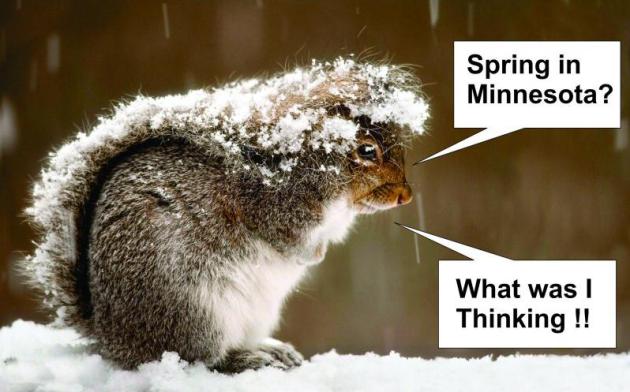
February 93rd
"If my calculations are correct it is now
February 93rd. Enough already." No argument here. It's been a (faux)
spring to remember.
April was the 3rd colder than average month in a
row. According to Dr. Mark Seeley it was the 10th wettest, statewide,
on record. He speculates "The snow day in Rochester Thursday was
probably the first time that southeastern Minnesota schools have closed
for snow in May." Official ice-out on Lake Minnetonka was Thursday,
"Only the 5th time in history the lake has lost ice cover in May. The
last time was 1965" he wrote.
Payback for 2012? Let's hope Mother Nature gets
her groove back, and soon.Yesterday's snow was decorative
(wrong word) - a high sun angle and infrared radiation penetrating thick
clouds to keep roads wet. Expect light rain today, but spring returns
Sunday (highs near 60F with peeks of sun); a good shot at 70F by Monday.
Cue the chirping robins, harps and - within 1 week - lawn mowers.
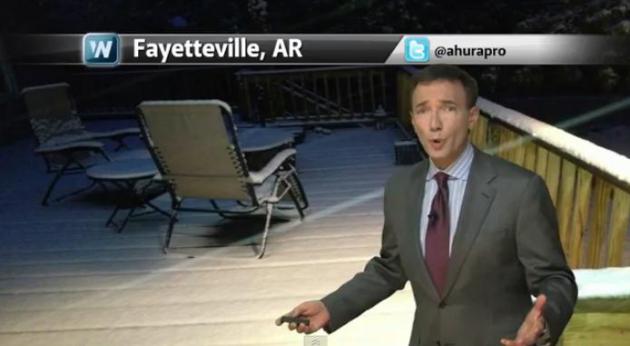 "Mother Nature Needs To Be Medicated: An All Or Nothing May".
The extremes are truly breathtaking - records for latest snows on
record from Minnesota to Oklahoma and Arkansas, frost for Texas, while
wildfires rage across California. Here's today's edition of
WeatherNation TV Climate Matters: "Head
shaking weather East of the Rockies. Snow reports as far south as
Oklahoma and Arkansas in May? Meantime, to the West, they would be
thrilled to see a little bit of that moisture. Meteorologist Paul
Douglas has more on the history and conditions leading up to today's
meteorological may-hem. If you'd like to check out the Cal Fire wildfire
tips go to http://readyforwildfire.org."
"Mother Nature Needs To Be Medicated: An All Or Nothing May".
The extremes are truly breathtaking - records for latest snows on
record from Minnesota to Oklahoma and Arkansas, frost for Texas, while
wildfires rage across California. Here's today's edition of
WeatherNation TV Climate Matters: "Head
shaking weather East of the Rockies. Snow reports as far south as
Oklahoma and Arkansas in May? Meantime, to the West, they would be
thrilled to see a little bit of that moisture. Meteorologist Paul
Douglas has more on the history and conditions leading up to today's
meteorological may-hem. If you'd like to check out the Cal Fire wildfire
tips go to http://readyforwildfire.org."
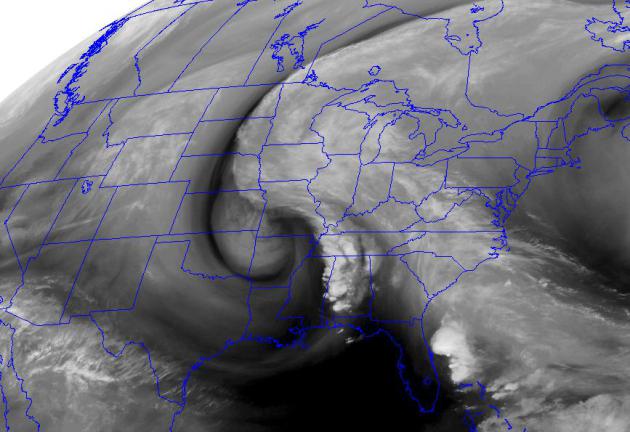 Cut-Off Low. America's weather is stuck: record heat
(and wildfires) west of the Rockies, a stalled storm over Missouri
spinning like a crazy top, pumping Gulf moisture right up the
Mississippi River Valley into the Upper Midwest. This nagging storm is
expected to break down over the weekend and finally drift east, meaning a
return to more normal temperatures east of the Rockies next week.
Image: University of Wisconsin.
Cut-Off Low. America's weather is stuck: record heat
(and wildfires) west of the Rockies, a stalled storm over Missouri
spinning like a crazy top, pumping Gulf moisture right up the
Mississippi River Valley into the Upper Midwest. This nagging storm is
expected to break down over the weekend and finally drift east, meaning a
return to more normal temperatures east of the Rockies next week.
Image: University of Wisconsin.
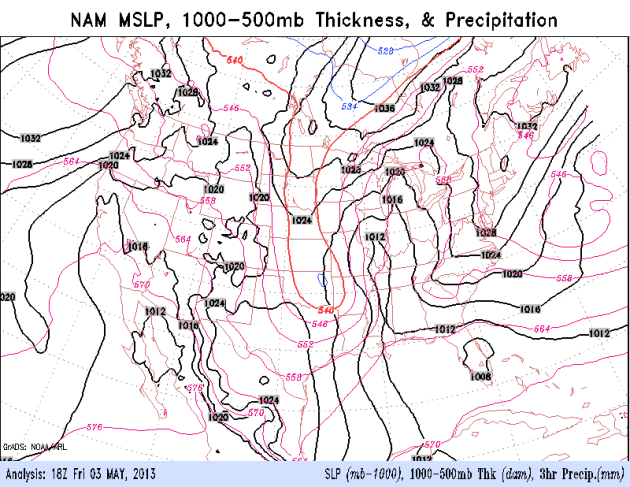
Stuck. The same (highly unusual for May) storm system responsible for snow as far south as Tulsa, Oklahoma and Fayetteville, Arkansas Friday will produce soaking rains over the southeast into Monday; rain showers slowly drying up over the Upper Midwest. Humidity levels increase in California with a little rain sweeping in off the Pacific, helping to ease the brushfire risk by Sunday. NAM model: NOAA.
 It's OK To Check Out The 7-Day Again. The ECMWF
model shows moderating temperatures into next week; highs in the 60s,
possibly a couple days of low 70s. Next Friday looks dry right now, a
few light showers next Saturday (but no steady rains for the Fishing
Opener). Next Sunday looks a bit cooler and drier for Race For The Cure,
and Mother's Day.
It's OK To Check Out The 7-Day Again. The ECMWF
model shows moderating temperatures into next week; highs in the 60s,
possibly a couple days of low 70s. Next Friday looks dry right now, a
few light showers next Saturday (but no steady rains for the Fishing
Opener). Next Sunday looks a bit cooler and drier for Race For The Cure,
and Mother's Day.
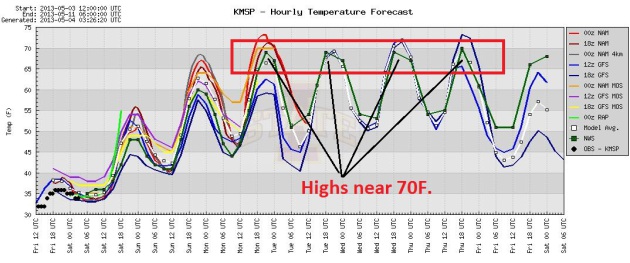 U.S. Models Agree. After a raw, chilly Saturday we
may hit 60F tomorrow (if the sun peeks thru for an hour or two in the
afternoon); highs closer to 70F from Monday into Thursday of next week. I
will never take a warm front for granted again.
U.S. Models Agree. After a raw, chilly Saturday we
may hit 60F tomorrow (if the sun peeks thru for an hour or two in the
afternoon); highs closer to 70F from Monday into Thursday of next week. I
will never take a warm front for granted again.
 Mellow May. Is that it for snow? Can I finally
retire the heavy jackets? I think so, but at this point, with everything
we've been thru, all bets are off. GFS data shows 60s and 70s in
mid-May. That would be nice.
Mellow May. Is that it for snow? Can I finally
retire the heavy jackets? I think so, but at this point, with everything
we've been thru, all bets are off. GFS data shows 60s and 70s in
mid-May. That would be nice.
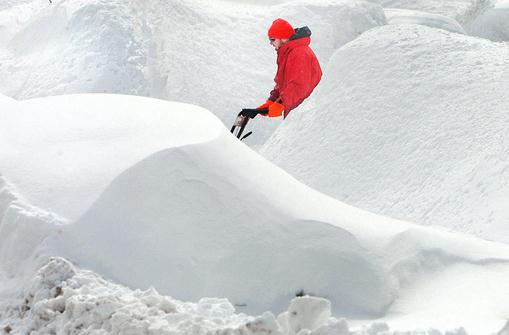 April Climate Summary, Many Records Broken. Here's an excerpt of an excellent, comprehensive recap of our (crazy) April and early May from Dr. Mark Seeley at WeatherTalk: "With
the dominance of colder than normal temperatures much of April's
precipitation fell as snow, and it was record setting at many locations.
Isabella (Lake County) reported 25 inches of snowfall on April 19th
breaking the old statewide record of 24 inches (St Cloud in 1893). Many
other observers reported record-setting daily amounts of snowfall on
7th, 11th, 19th, and 23rd. The freqency of snowfall added up to record
monthly snowfall totals for many Minnesota observers, including 55.9
inches at Park Lake (Carlton County), 55.6 inches at Island Lake (St
Louis County), 50.8 inches at Duluth Airport, 47.0 inches at Babbitt,
46.5 inches at Isabella, 45.5 inches at Two Harbors, and 41 inches at
Cloquet. Several other observers reported record monthly totals of
snowfall as well, exceeding 20 and 30 inches in most cases (24.4 inches
at St Cloud for example was a new April record total). Peak snow depth
during the month was over 30 inches in northern parts of the state.
With the thaw at the end of the month maple sap flow was going gang
busters in northern forests and being collected by maple syrup
producers..."
April Climate Summary, Many Records Broken. Here's an excerpt of an excellent, comprehensive recap of our (crazy) April and early May from Dr. Mark Seeley at WeatherTalk: "With
the dominance of colder than normal temperatures much of April's
precipitation fell as snow, and it was record setting at many locations.
Isabella (Lake County) reported 25 inches of snowfall on April 19th
breaking the old statewide record of 24 inches (St Cloud in 1893). Many
other observers reported record-setting daily amounts of snowfall on
7th, 11th, 19th, and 23rd. The freqency of snowfall added up to record
monthly snowfall totals for many Minnesota observers, including 55.9
inches at Park Lake (Carlton County), 55.6 inches at Island Lake (St
Louis County), 50.8 inches at Duluth Airport, 47.0 inches at Babbitt,
46.5 inches at Isabella, 45.5 inches at Two Harbors, and 41 inches at
Cloquet. Several other observers reported record monthly totals of
snowfall as well, exceeding 20 and 30 inches in most cases (24.4 inches
at St Cloud for example was a new April record total). Peak snow depth
during the month was over 30 inches in northern parts of the state.
With the thaw at the end of the month maple sap flow was going gang
busters in northern forests and being collected by maple syrup
producers..."
Photo credit above: "Joel Krochalk, clears his driveway Friday morning, April 19, 2013 while surrounding by deeply drifted snow in his and neighboring yards, in Duluth, Minn." (AP Photo/The Duluth News-Tribune, Bob King)
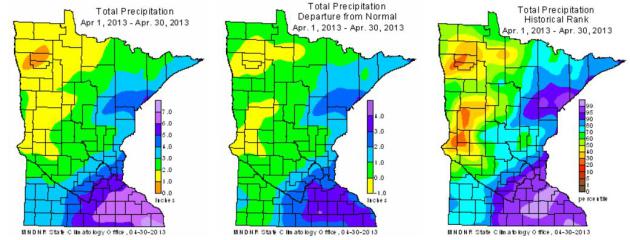 April Highlights - Emerging From Drought. Here's an excerpt of a good summary of April weather conditions statewide, from the Minnesota DNR:
April Highlights - Emerging From Drought. Here's an excerpt of a good summary of April weather conditions statewide, from the Minnesota DNR:
 California Wildfires From Space. Here's a post from NOAA's Environmental Visualization Laboratory: "A
series of wildfires in Ventura County, California (northwest of Los
Angeles) have burned over 6,500 as of May 3rd, according to the U.S. Forest Service.
The Suomi NPP satellite passed over the blaze on May 2, 2013 around
21:30 Z, capturing this high resolution imagery with its visible and
infrared energy sensors. A stream of smoke is clearly visible moving
west over the ocean, as are the heat signatures from the active fires
areas. The fires are expected to be contained by May 4th, and fire
weather conditions in the region seem to be improving, according to the
NOAA Storm Prediction Center."
California Wildfires From Space. Here's a post from NOAA's Environmental Visualization Laboratory: "A
series of wildfires in Ventura County, California (northwest of Los
Angeles) have burned over 6,500 as of May 3rd, according to the U.S. Forest Service.
The Suomi NPP satellite passed over the blaze on May 2, 2013 around
21:30 Z, capturing this high resolution imagery with its visible and
infrared energy sensors. A stream of smoke is clearly visible moving
west over the ocean, as are the heat signatures from the active fires
areas. The fires are expected to be contained by May 4th, and fire
weather conditions in the region seem to be improving, according to the
NOAA Storm Prediction Center."
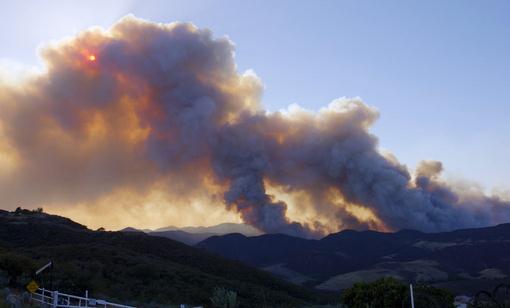 Dry Winter, Warming Trend Foretell Fire Danger. West
of the Rockies it was a Top 5 driest winter season on record - the fact
that we're tracking major blazes in early May is a bad omen. It will be
a long, hot, dry and fiery season for the west in 2013. Here's an
excerpt from thehour.com: "...We're
looking at a combination of a low-moisture winter and a warming and
drying pattern in the West that will increase the fire potential," said
Ed Delgado, predictive services manager.
If that sounds familiar to the region's residents, it should. In 2012,
record-setting fires raged in New Mexico and Oregon, while destructive
Colorado blazes torched hundreds of homes amid one of the state's worst
seasons in years. Just like last year, Colorado experienced some of its
first 2013 wildfires in March...."
Dry Winter, Warming Trend Foretell Fire Danger. West
of the Rockies it was a Top 5 driest winter season on record - the fact
that we're tracking major blazes in early May is a bad omen. It will be
a long, hot, dry and fiery season for the west in 2013. Here's an
excerpt from thehour.com: "...We're
looking at a combination of a low-moisture winter and a warming and
drying pattern in the West that will increase the fire potential," said
Ed Delgado, predictive services manager.
If that sounds familiar to the region's residents, it should. In 2012,
record-setting fires raged in New Mexico and Oregon, while destructive
Colorado blazes torched hundreds of homes amid one of the state's worst
seasons in years. Just like last year, Colorado experienced some of its
first 2013 wildfires in March...."
Photo credit above: "Smoke billows from a fire burring in Point Mugu State Park during a wildfire that burned several thousand acres, Thursday, May 2, 2013, in Ventura County, Calif." (AP Photo/Mark J. Terrill)
 Are You Ready For Wildfires? CAL FIRE has a great interactive tool with information for homeowners to help them lower the risk of wildfire damage and destruction.
Are You Ready For Wildfires? CAL FIRE has a great interactive tool with information for homeowners to help them lower the risk of wildfire damage and destruction.
 Furloughs And Hiring Freeze To The National Weather Service Threaten Forecast Accuracy.
The first time lives are put at risk by these planned furloughts there
will be a public outcry. Wait for it. Here's an excerpt of a press
release from The National Weather Service Employees Organization: "National
Weather Service employees say that four furlough days added to the
current hiring freeze stretches already short-staffed offices to a
breaking point, puts thhe American public at risk, and jeopardizes the
agency's mission of saving lives and property. Most of the NWS employees
being furloughed are designated "emergency essential", because of their
public safety responsibilities and are required to work, even during
catastrophic conditions. Commerce, air travel, and most daily events
hinge on accurate forecasts. The forecasts become life savers in the
summer when floods, tornadoes, hurricanes, heat waves, wildfires and
thunderstorms are most prevalent. "Furloughts to the National Weather
Service, in conjunction with the furloughs to the other agencies the
nation depends on for emergency services, is like playing chicken with
the American public," said NWSEO President Dan Sobien. "One missed event
would realistically cost millions. NOAA is risking everything and has
nothing to gain. It's not a sound decision...."
Furloughs And Hiring Freeze To The National Weather Service Threaten Forecast Accuracy.
The first time lives are put at risk by these planned furloughts there
will be a public outcry. Wait for it. Here's an excerpt of a press
release from The National Weather Service Employees Organization: "National
Weather Service employees say that four furlough days added to the
current hiring freeze stretches already short-staffed offices to a
breaking point, puts thhe American public at risk, and jeopardizes the
agency's mission of saving lives and property. Most of the NWS employees
being furloughed are designated "emergency essential", because of their
public safety responsibilities and are required to work, even during
catastrophic conditions. Commerce, air travel, and most daily events
hinge on accurate forecasts. The forecasts become life savers in the
summer when floods, tornadoes, hurricanes, heat waves, wildfires and
thunderstorms are most prevalent. "Furloughts to the National Weather
Service, in conjunction with the furloughs to the other agencies the
nation depends on for emergency services, is like playing chicken with
the American public," said NWSEO President Dan Sobien. "One missed event
would realistically cost millions. NOAA is risking everything and has
nothing to gain. It's not a sound decision...."
 Fracking Won't Get The U.S. Out Of The Persian Gulf. Here's an except of an interesting perspective on "energy independence" from Steve LeVine at Quartz:
"...The US seems likely to produce a lot more oil, perhaps even a
volume nearing or meeting self-sufficiency, Levi says. If so, it will
be thanks to a boom in volumes from two sources—the deepwater Gulf of
Mexico, and shale
in places like North Dakota. But an age of plenty will trigger
corresponding steps by other nations to neutralize perceived adverse
impacts on themselves. Geopolitically–in terms of the financial burden
of patrolling the world’s sea lanes, for instance—Americans are likely
to be right back where they started, meaning footing the bill for a
global Navy. The Pacific is the same—the US is highly unlikely to pull
back from its robust security presence despite China’s wish that it
stop...."
Fracking Won't Get The U.S. Out Of The Persian Gulf. Here's an except of an interesting perspective on "energy independence" from Steve LeVine at Quartz:
"...The US seems likely to produce a lot more oil, perhaps even a
volume nearing or meeting self-sufficiency, Levi says. If so, it will
be thanks to a boom in volumes from two sources—the deepwater Gulf of
Mexico, and shale
in places like North Dakota. But an age of plenty will trigger
corresponding steps by other nations to neutralize perceived adverse
impacts on themselves. Geopolitically–in terms of the financial burden
of patrolling the world’s sea lanes, for instance—Americans are likely
to be right back where they started, meaning footing the bill for a
global Navy. The Pacific is the same—the US is highly unlikely to pull
back from its robust security presence despite China’s wish that it
stop...."
Photo credit above: "Never done." AP Photo/Hassan Ammar.
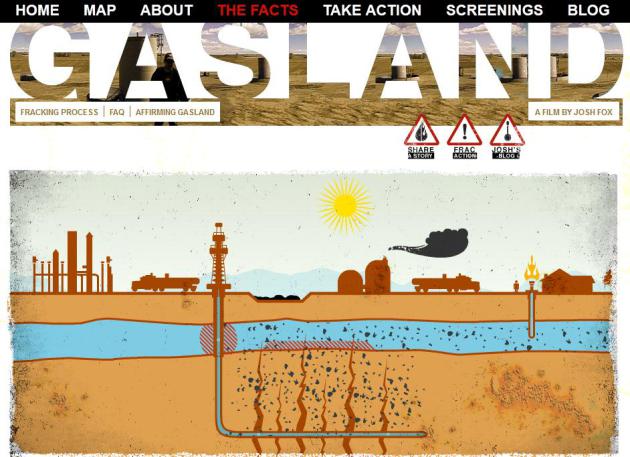 So You Think "Fracking" Is Safe? Watch This Movie.
I've been trying to keep an open mind about hydraulic fracturing, or
"fracking", pumping huge amounts of water, and nearly 600 chemicals,
deep into the ground to release natural gas from rocks and sediment. The
idea of "energy independence" resonates, especially with a son in the
Navy. But after watching "Gasland"
I'm not so sure, in fact I'm suddenly grateful there's no natural gas
or oil underneath Minnesota. I realize North Dakota is undergoing an
economic boom, and good for them. But if drinking water becomes
contaminated, streams fouled, health of nearby residents negatively
impacted, at what cost are we chasing the pipedream of energy
independence. Better yet, put up a few solar panels and a wind turbine.
Not sure if it's on Netflix yet (I watched via DirecTV), but this is one
documentary you should put on your to-do list.
So You Think "Fracking" Is Safe? Watch This Movie.
I've been trying to keep an open mind about hydraulic fracturing, or
"fracking", pumping huge amounts of water, and nearly 600 chemicals,
deep into the ground to release natural gas from rocks and sediment. The
idea of "energy independence" resonates, especially with a son in the
Navy. But after watching "Gasland"
I'm not so sure, in fact I'm suddenly grateful there's no natural gas
or oil underneath Minnesota. I realize North Dakota is undergoing an
economic boom, and good for them. But if drinking water becomes
contaminated, streams fouled, health of nearby residents negatively
impacted, at what cost are we chasing the pipedream of energy
independence. Better yet, put up a few solar panels and a wind turbine.
Not sure if it's on Netflix yet (I watched via DirecTV), but this is one
documentary you should put on your to-do list.
 No, Google Glass Is Not A Segway For Your Face. My favorite headline of the week; here's an excerpt from pandodaily.com: “Google Glass is so futuristic it’s like wearing a Segway on your face.”– Tweet by Matt Novak
No, Google Glass Is Not A Segway For Your Face. My favorite headline of the week; here's an excerpt from pandodaily.com: “Google Glass is so futuristic it’s like wearing a Segway on your face.”– Tweet by Matt Novak
"That Tweet likely articulates Google’s biggest fear for Glass, its wearable computer. What if the cool crowd doesn’t accept it? What if, like the Segway, it becomes an emblem of the awkwardly nerdy? What if consumers reject the technology because, even though it’s amazing, there’s too much social stigma to being seen in public with it?..."
 History Of The High-Five. I did not know that -
think of the fun you'll have with friends at your next sporting event.
Here's an excerpt of a fascinating article at ESPN: "WHEN I FIRST PHONED
Lamont Sleets this spring, I knew only the following: He is a
middle-aged man living in the small town of Eminence, Ky.; he played
college basketball for Murray State University between 1979 and 1984;
and he reportedly created one of the most contagious, transcendently
ecstatic gestures in sports -- and maybe, for that matter, American
life. I was calling Sleets because I wanted to talk to the man who
invented the high five. I'd first read about him in 2007 in a press
release from National High Five Day, a group that was trying to
establish a holiday for convivial palm-slapping on the third Thursday
in April. Apparently, Sleets had been reluctantly put in touch with the
holiday's founders, and he explained that his father, Lamont Sleets
Sr., served in Vietnam in the 1st Battalion, 5th Infantry -- a unit
nicknamed The Five..."
History Of The High-Five. I did not know that -
think of the fun you'll have with friends at your next sporting event.
Here's an excerpt of a fascinating article at ESPN: "WHEN I FIRST PHONED
Lamont Sleets this spring, I knew only the following: He is a
middle-aged man living in the small town of Eminence, Ky.; he played
college basketball for Murray State University between 1979 and 1984;
and he reportedly created one of the most contagious, transcendently
ecstatic gestures in sports -- and maybe, for that matter, American
life. I was calling Sleets because I wanted to talk to the man who
invented the high five. I'd first read about him in 2007 in a press
release from National High Five Day, a group that was trying to
establish a holiday for convivial palm-slapping on the third Thursday
in April. Apparently, Sleets had been reluctantly put in touch with the
holiday's founders, and he explained that his father, Lamont Sleets
Sr., served in Vietnam in the 1st Battalion, 5th Infantry -- a unit
nicknamed The Five..."
Image credit above: Illustrations by Bruce Hutchison for ESPN The Magazine. "The origin of the high five is as mysterious as it is timeless."
 I'm Mowing The Damn Lawn! This YouTube clip provided a badly-needed chuckle yesterday. Details from kcci.com: "A Story County man was not about to let a little May snow keep him from his yard work. Roger Fritz shared this video on YouTube.
He put on shorts and T-shirt for the effort. Fritz said, "It was May 2,
and I decided the grass needed cut." Share your fun snow photos and
video through u local."
I'm Mowing The Damn Lawn! This YouTube clip provided a badly-needed chuckle yesterday. Details from kcci.com: "A Story County man was not about to let a little May snow keep him from his yard work. Roger Fritz shared this video on YouTube.
He put on shorts and T-shirt for the effort. Fritz said, "It was May 2,
and I decided the grass needed cut." Share your fun snow photos and
video through u local."
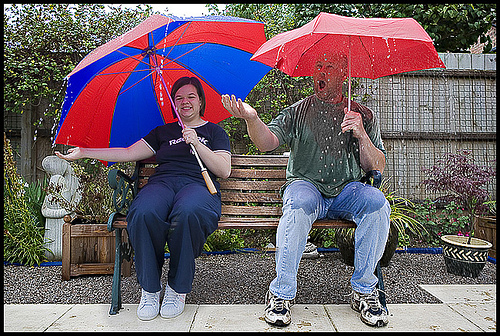
Climate Stories...
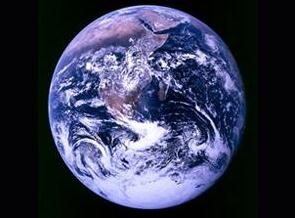 "...Last year was the 27th consecutive year with an above average
global temperature and the ninth warmest year on record. The years
between 2001 and 2012 were among the top 13 warmest on record." - The Telegraph
"...Last year was the 27th consecutive year with an above average
global temperature and the ninth warmest year on record. The years
between 2001 and 2012 were among the top 13 warmest on record." - The Telegraph
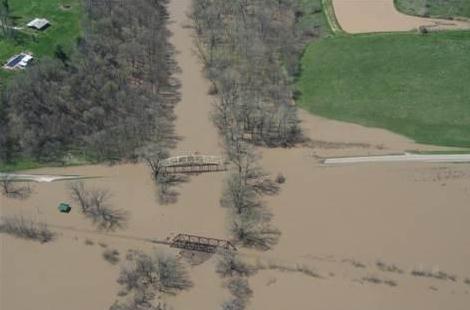 Climate Change Creates Maddening Weather Whiplash. Yep, that pretty much sums it up - from one extreme to the next. Here's an excerpt of a story from Discovery News and NBC News: "...The
term "weather whiplash" was first invoked to describe this effect by
science writer Andrew Freedman in 2009. But now climate scientists are
using the term, and pointing to the current floods, in the Midwest as
the classic case. "I'm using it now to describe the longer term kind of
flooding-drying cycles," said meteorologist Jeff Masters, co-founder
and director meteorology at the Weather Underground. "It's pretty
amazing. It used to be only one in three years were flood years. Now
it's almost every year." The whiplash has become especially painful in
river towns where just a few months ago dredging was needed to keep
goods afloat and keep communities alive. Now sandbags are the only
thing holding back the rivers from flooding the very same towns..."
Climate Change Creates Maddening Weather Whiplash. Yep, that pretty much sums it up - from one extreme to the next. Here's an excerpt of a story from Discovery News and NBC News: "...The
term "weather whiplash" was first invoked to describe this effect by
science writer Andrew Freedman in 2009. But now climate scientists are
using the term, and pointing to the current floods, in the Midwest as
the classic case. "I'm using it now to describe the longer term kind of
flooding-drying cycles," said meteorologist Jeff Masters, co-founder
and director meteorology at the Weather Underground. "It's pretty
amazing. It used to be only one in three years were flood years. Now
it's almost every year." The whiplash has become especially painful in
river towns where just a few months ago dredging was needed to keep
goods afloat and keep communities alive. Now sandbags are the only
thing holding back the rivers from flooding the very same towns..."
Photo credit: Office of Missouri Gov. Jay Nixon via Reuters. "Flooding is seen along the Mississippi River near LaGrange, Missouri, in this April 21, handout photo courtesy of the Missouri Governor's Office."
 Record Low In Arctic Sea Ice Caused By Global Warming, UN Says. Here's an excerpt from an update at The Telegraph: ...“Despite
the cooling influence of à La Niña episode early in the year, 2012
joined the 10 previous years as one of the warmest – at ninth place – on
record," he said. "Although the rate of warming varies from year
to year due to natural variability caused by the El Niño/La Niña cycle,
volcanic eruptions and other phenomena, the sustained warming of the
lower atmosphere is a worrisome sign. “The continued upward trend in
atmospheric concentrations of greenhouse gases and the consequent
increase in radiative forcing of the Earth’s atmosphere confirm that
the warming will continue...”
Record Low In Arctic Sea Ice Caused By Global Warming, UN Says. Here's an excerpt from an update at The Telegraph: ...“Despite
the cooling influence of à La Niña episode early in the year, 2012
joined the 10 previous years as one of the warmest – at ninth place – on
record," he said. "Although the rate of warming varies from year
to year due to natural variability caused by the El Niño/La Niña cycle,
volcanic eruptions and other phenomena, the sustained warming of the
lower atmosphere is a worrisome sign. “The continued upward trend in
atmospheric concentrations of greenhouse gases and the consequent
increase in radiative forcing of the Earth’s atmosphere confirm that
the warming will continue...”
Graphic credit above: "January–December global land and ocean surface temperature anomalies (relative to 1961–1990) for the period 1950–2012."
 U.N. Report Highlights Disturbing Signs Of Climate Change. Following up on the story above, here's another perspective on the U.N. report from redOrbit.com: "The
United Nations’ official weather agency, the World Meteorological
Organization, has announced that last year saw record-low levels of
Arctic sea ice – yet another troubling sign of changing global climate
patterns. The WMO also found that 2012 was the ninth-warmest year since
official records started in the 1850s, according to a report
released by the organization on Thursday. It also stated that every
year from 2001 to 2012 was among the top 13 warmest on record, with the
hottest being 2010. WMO Secretary General Michel Jarraud called the findings a “disturbing sign of climate change...”
U.N. Report Highlights Disturbing Signs Of Climate Change. Following up on the story above, here's another perspective on the U.N. report from redOrbit.com: "The
United Nations’ official weather agency, the World Meteorological
Organization, has announced that last year saw record-low levels of
Arctic sea ice – yet another troubling sign of changing global climate
patterns. The WMO also found that 2012 was the ninth-warmest year since
official records started in the 1850s, according to a report
released by the organization on Thursday. It also stated that every
year from 2001 to 2012 was among the top 13 warmest on record, with the
hottest being 2010. WMO Secretary General Michel Jarraud called the findings a “disturbing sign of climate change...”
Photo credit: Photos.com.
A few T-showers pop up by midweek; temperatures closer to normal next week. You remember "NORMAL" right?
Catch your Fishing Opener trophy walleye next
Saturday morning (falling barometer, few showers). Expect cooler 50s in
time for Mother's Day brunch.



Stuck. The same (highly unusual for May) storm system responsible for snow as far south as Tulsa, Oklahoma and Fayetteville, Arkansas Friday will produce soaking rains over the southeast into Monday; rain showers slowly drying up over the Upper Midwest. Humidity levels increase in California with a little rain sweeping in off the Pacific, helping to ease the brushfire risk by Sunday. NAM model: NOAA.




Photo credit above: "Joel Krochalk, clears his driveway Friday morning, April 19, 2013 while surrounding by deeply drifted snow in his and neighboring yards, in Duluth, Minn." (AP Photo/The Duluth News-Tribune, Bob King)

- April precipitation totals were
well above historical averages in the eastern one-half of Minnesota,
near to below historical averages for the western one-half of the
state. For many southeast Minnesota counties, monthly precipitation
totals topped the long-term average by more than three inches, erasing
drought concerns in those areas. Many observers reported measurable
precipitation on more than 20 days during the month. Some observers
reported precipitation on 10 or 11 consecutive days.
[see: April 2013 Precipitation Map | April 2013 Climate Summary Table]
- Ten winter storm warnings and numerous winter weather advisories were issued for Minnesota counties by the National Weather Service during the course of the April. Frequent, and often heavy, storms piled up snowfall totals to record or near-record levels at many locations. Historical average monthly snowfall totals range from two inches in southern Minnesota to six inches in northern counties. In many Minnesota communities, April 2013 monthly snowfall totals exceeded 12 inches. Numerous locales reported monthly snowfall totals in excess of 24 inches. The focal point for the heaviest of the April snowstorms was northeast Minnesota, particularly Duluth, where April snowfall reached historic levels. The monthly snowfall total at Duluth's International Airport was an astounding 50.8 inches. Not only did this top the previous April record by nearly 20 inches, it was Duluth's snowiest month ever for any month of the year. The April snow and cold snarled roads, delayed agricultural field work, canceled outdoor events, and postponed natural signs of spring by many weeks.


Photo credit above: "Smoke billows from a fire burring in Point Mugu State Park during a wildfire that burned several thousand acres, Thursday, May 2, 2013, in Ventura County, Calif." (AP Photo/Mark J. Terrill)



Photo credit above: "Never done." AP Photo/Hassan Ammar.


"That Tweet likely articulates Google’s biggest fear for Glass, its wearable computer. What if the cool crowd doesn’t accept it? What if, like the Segway, it becomes an emblem of the awkwardly nerdy? What if consumers reject the technology because, even though it’s amazing, there’s too much social stigma to being seen in public with it?..."

Image credit above: Illustrations by Bruce Hutchison for ESPN The Magazine. "The origin of the high five is as mysterious as it is timeless."


TODAY: Periods of rain, fairly unpleasant. Winds: N 10. High: 44
SATURDAY NIGHT: More rain, still raw. Low: 41
SUNDAY: Spotty shower or two. Mostly cloudy. Drier. Better. Winds: N 8. High: 61
MONDAY: Intervals of sun. Feels like spring again. Wake-up: 45. High: near 70
TUESDAY: Clouds increase, late thunder? Wake-up: 49. High: near 73
WEDNESDAY: Some sun, isolated T-shower. Wake-up: 52. High: 72
THURSDAY: Partly sunny, lukewarm. Wake-up: 53. High: 70
FRIDAY: Clouds increase, still mild. Wake-up: 52. High: 68


Photo credit: Office of Missouri Gov. Jay Nixon via Reuters. "Flooding is seen along the Mississippi River near LaGrange, Missouri, in this April 21, handout photo courtesy of the Missouri Governor's Office."

Graphic credit above: "January–December global land and ocean surface temperature anomalies (relative to 1961–1990) for the period 1950–2012."

Photo credit: Photos.com.
No comments:
Post a Comment